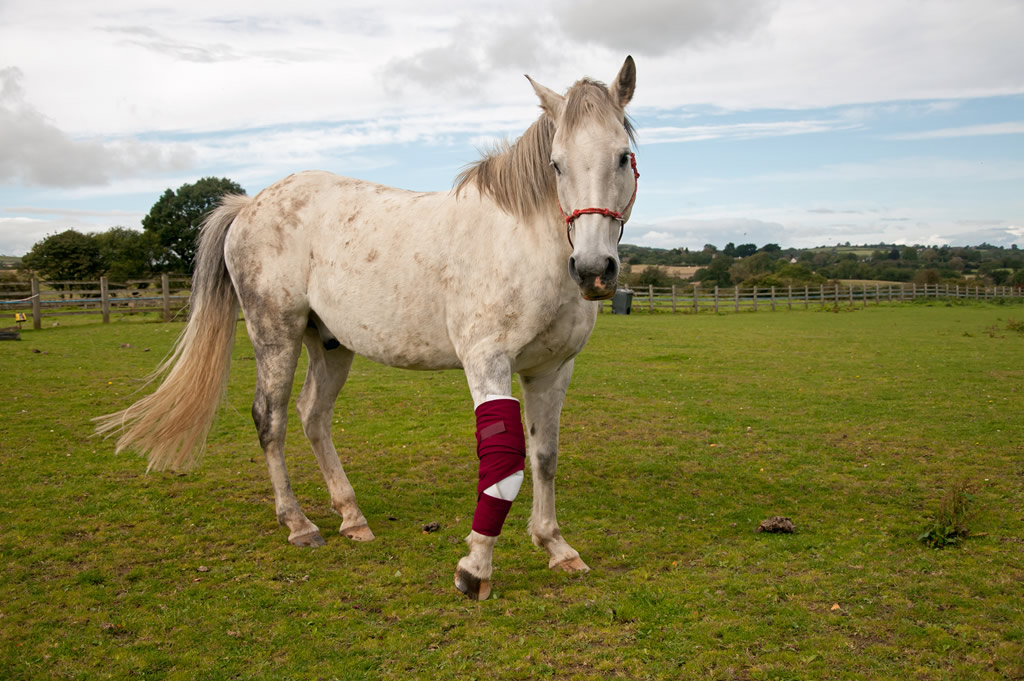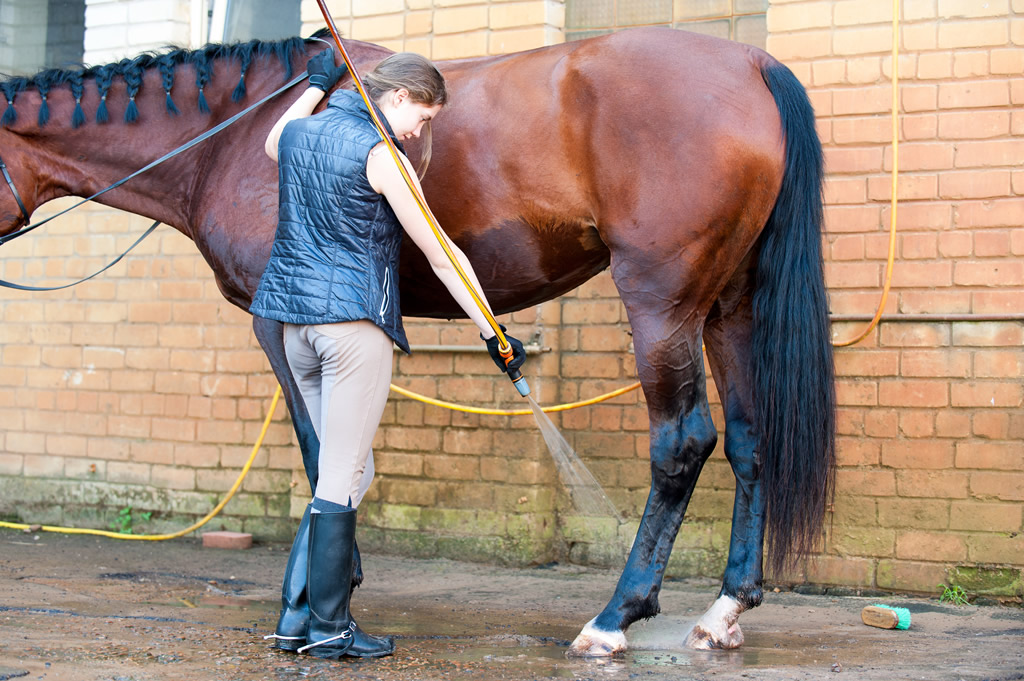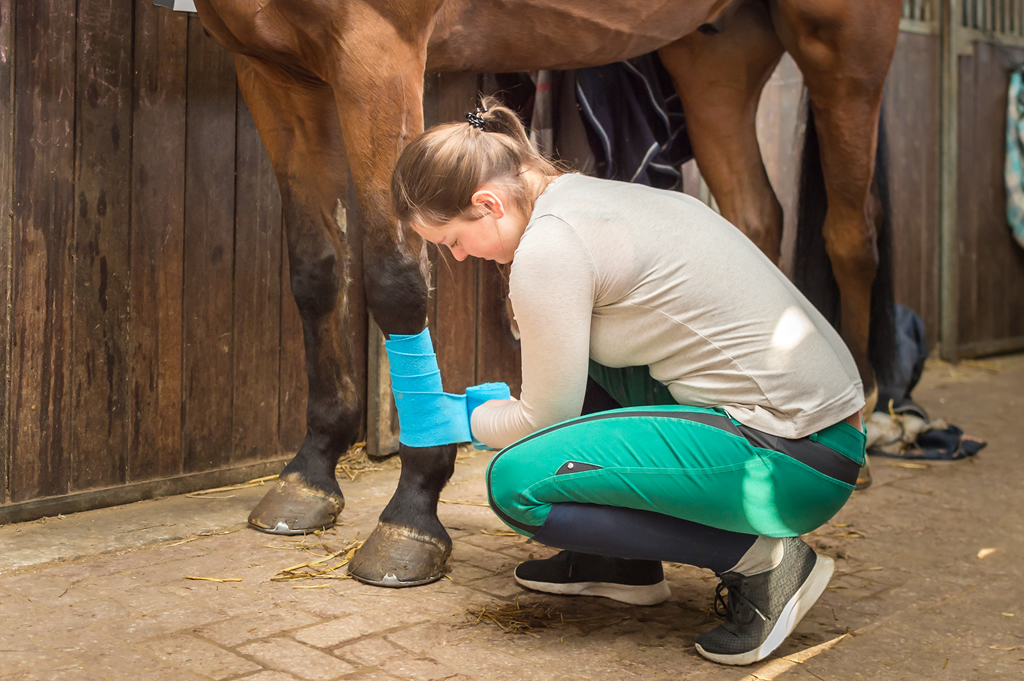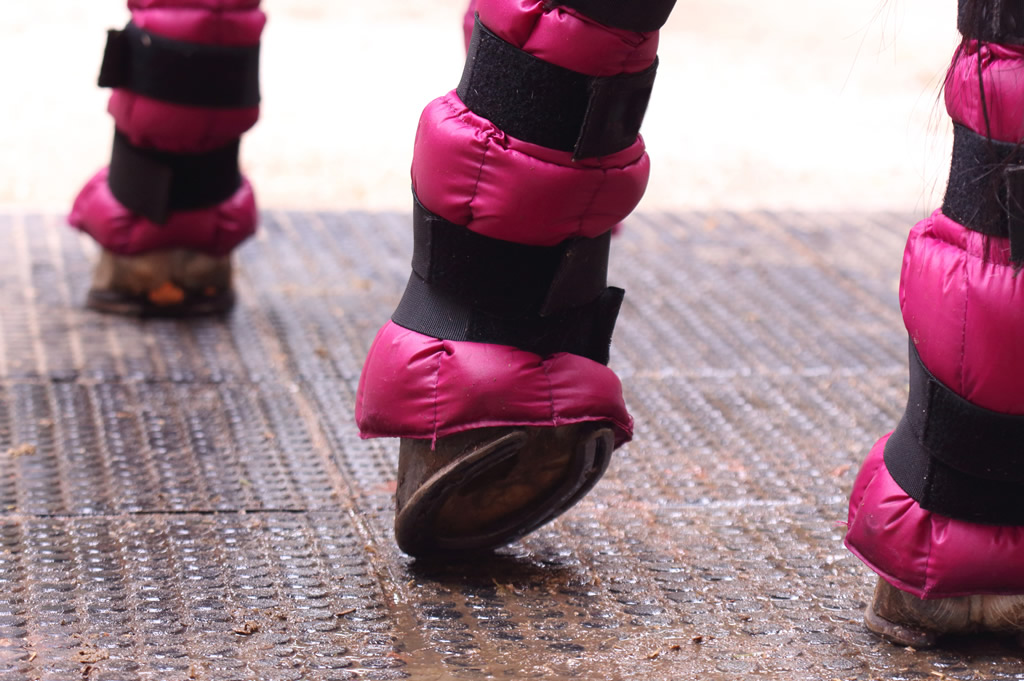As most horse owners know, our equine friends can be prone to injury, especially from knocks or sprains to the legs causing soft tissue damage and inflammation. Cold therapy can be a useful technique to help treat injuries like this for your horse. At The Insurance Emporium, we’ve spoken to our horse health expert on everything to do with cold therapy in horses, and how it could help your injured horse!
What is cold therapy?

Cold therapy is an age-old technique, used to help treat injuries for horses. It’s simple to use, effective, and available to everybody! The application of something cold can help reduce blood flow to the injured area, helping to reduce bruising, haemorrhage, and alleviate pain. Cold therapy can be used to treat acute injuries, assist in the recovery of old injuries, or even help to prevent new ones.
Uses of cold therapy
There are several uses for cold therapy, as it can be used to help horses suffering from new injuries, old injuries, and can also be used to help prevent injuries!
Cold therapy for new injuries

Starting cold therapy as soon as an acute injury becomes apparent is most beneficial, and should be continued for the first 36 hours.
When a horse suffers an acute injury, like a knock or a kick, the blood vessels within the affected area are damaged. This can cause localised bruising, or haemorrhage. Inflammatory mediators (cytokines) are then released from white blood cells, vessels and platelets. This process can cause leakage of fluid or soft tissue swelling. The activated white blood cells also produce white blood cells also produce enzymes and free radicals which can cause further damage to healthy tissue.
Applying something cold to the affected area will help reduce the pain for your horse, while reducing blood flow and fluid accumulation to the area. This will help reduce inflammation and make the healing process much more quickly.
Cold therapy for old injuries
While your horse’s injuries are healing and they are in the rehabilitation phase, cold therapy can still assist in the recovery! Implementing a cycle of warmth interspersed with cold therapy will help to increase blood flow to the areas, which is necessary to aid in the healing process.
Cold therapy can also be used as a maintenance tool when a horse is being brought back into work following an injury. This can be a key time to use cold therapy, as newly repaired tissues following injury can be at risk of inflammation.
Prevention of injuries with cold therapy
Cold therapy can also be used routinely to help prevent injury for your horse following strenuous exercise. During periods of intense exercise, there is increased blood flow to the muscles, tendons and ligaments. The increased blood flow can continue post-exercise, introducing fluid that is no longer needed, which in turn releases inflammatory enzymes. This can cause discomfort for your horse, while causing tissues to stretch, increasing the risk of injury.
Like with acute injuries, cold therapy post-exercise will cause your horse’s blood vessels to contract, which can help to more quickly restore normal circulatory conditions.
Cold therapy techniques

A variety of cold therapy techniques and products are available for your horse, each with different degrees of effectiveness. Bear in mind, any temperature decrease can be beneficial in reducing inflammation!
Cold hosing
The simplest and most widely used cold therapy technique involves applying a stream of cold water from a hose to the affected area. Cold hosing might not be the most effective form of cold therapy, as the water is unlikely to be the right temperature. However, vets might commonly advise to cold hose affected areas of your horse, as it is something that anybody can do, and is very difficult to do incorrectly.
Ice bucket
Using an ice bucket can be an effective cold therapy treatment… And we’re not talking about the ice bucket challenge! If your horse will stand with the affected limb in a bucket of water, add ice to reduce the temperature to 0˚C for an effective cold therapy treatment. Regularly replenishing the ice will help to keep the water at the desired temperature.
A lot of horses will not stand in the buckets of water. If so, you can wrap ice blocks or packets of frozen vegetables in towels. These can then be bandaged to the affected area.
Ice boots

Ice boots* are boots for your horse which can either be kept in the freezer or have pockets for ice to be inserted. You can also purchase leg wraps which can be kept in the freezer in preparation for use. It’s advisable to bandage your horse’s leg before using ice boots to help prevent cold burns.
Cold water boots
Cold water boots are similar to ice boots, but are soaked in water prior to use, rather than kept in the freezer. The effectiveness of these boots will depend on the temperature of the water, so it’s usually recommended to use iced water.
Refrigerated cooling boots
These boots contain a coolant, which can be set at the desired temperature. A refrigeration unit within the boot cools and circulates the coolant to create a constant temperature. It’s important to take care to avoid cold burns with this technique, as it can be possible to set the temperature below 0˚C.
Cold packs
Cold packs are a valuable addition to any first aid kit for your horse. These small, chemical-filled packs can provide immediate cold therapy when you and your horse are away from home.
Topical cooling products
A range of products like cooling gels and clays can be applied to the lower limbs and cool through evaporation. Bear in mind, topical cooling products only provide a cooling effect when wet. If they dry out, they will be ineffective and cause the skin to warm up again.
We hope this advice on cold therapy is useful for you and your horse! Remember, if you’re worried about an injury, we’d always recommend consulting your vet. If you’re a horse owner, you might want to think about taking out insurance for your horse. At The Insurance Emporium, our Defaqto 5 Star Rated^ Horse Insurance includes cover for Death, Theft Or Straying as standard. Then, customise your policy with our range of Optional Benefits! Head on down to The Insurance Emporium to see if we have the policy for you.
* This promotion is in no way sponsored, endorsed or administered by, or associated with Premier Equine.
^ Defaqto 5 Star Rating applies to The Insurance Emporium’s Lifetime Gold Pet and Horse Insurance.
All content provided on this blog is for informational purposes only. We make no representations as to the accuracy or completeness of any information on this site or found by following any link on this site. We will not be liable for any errors or omissions in this information nor for the availability of this information. We will not be liable for any loss, injury or damage arising from the display or use of this information. This policy is subject to change at any time.


